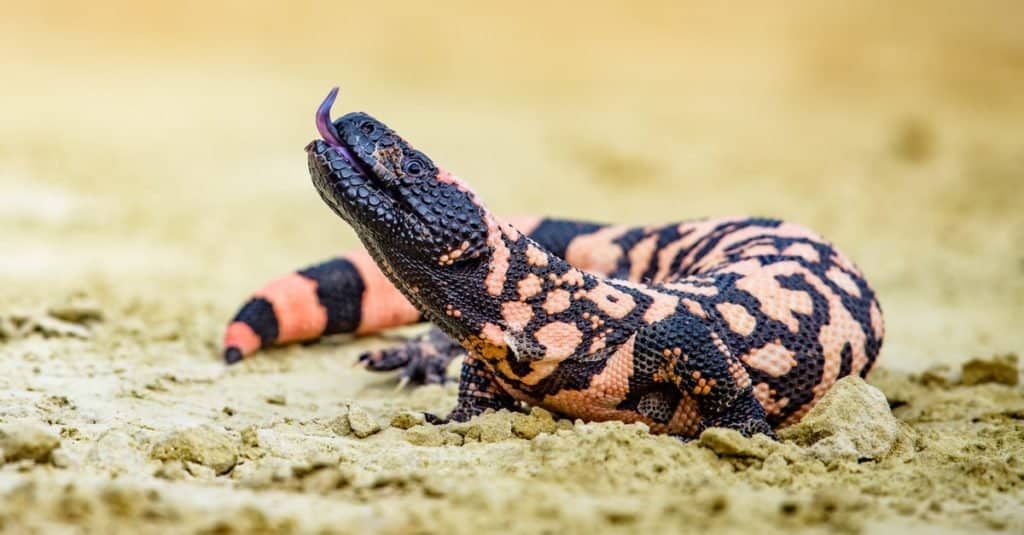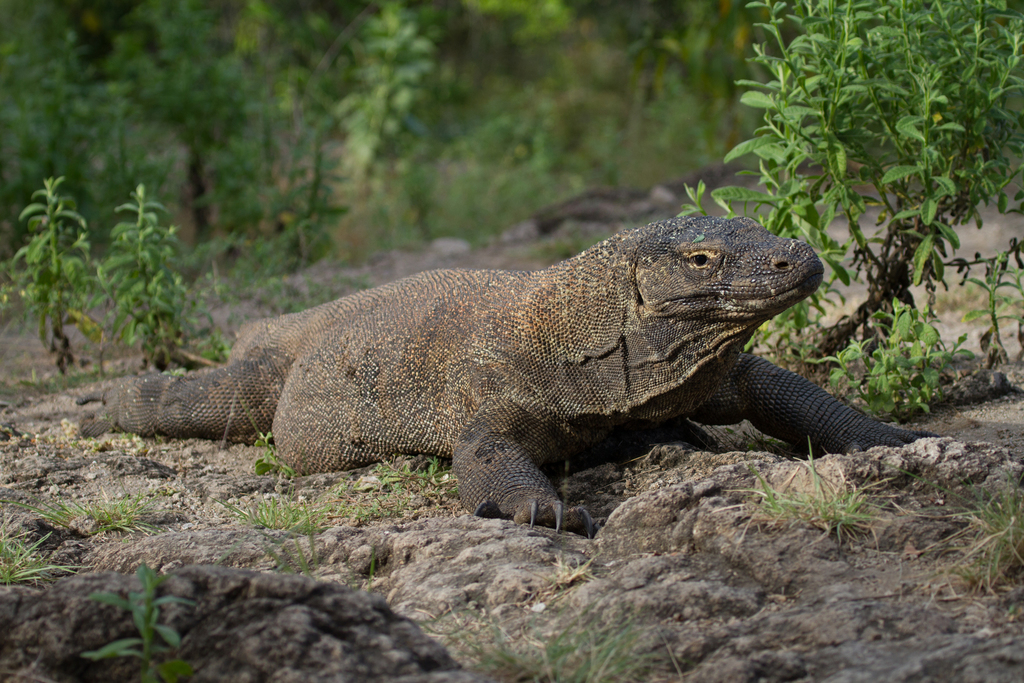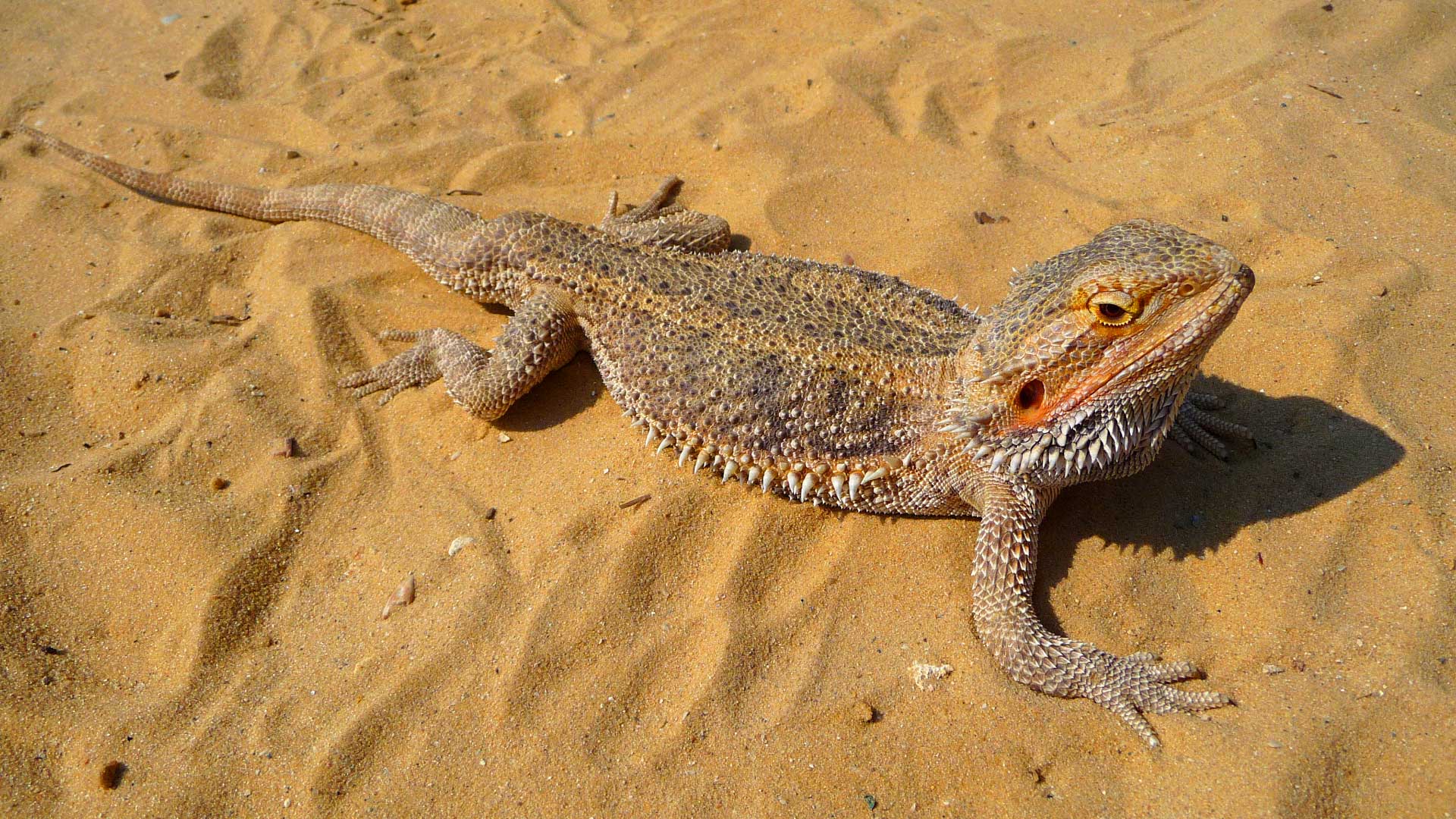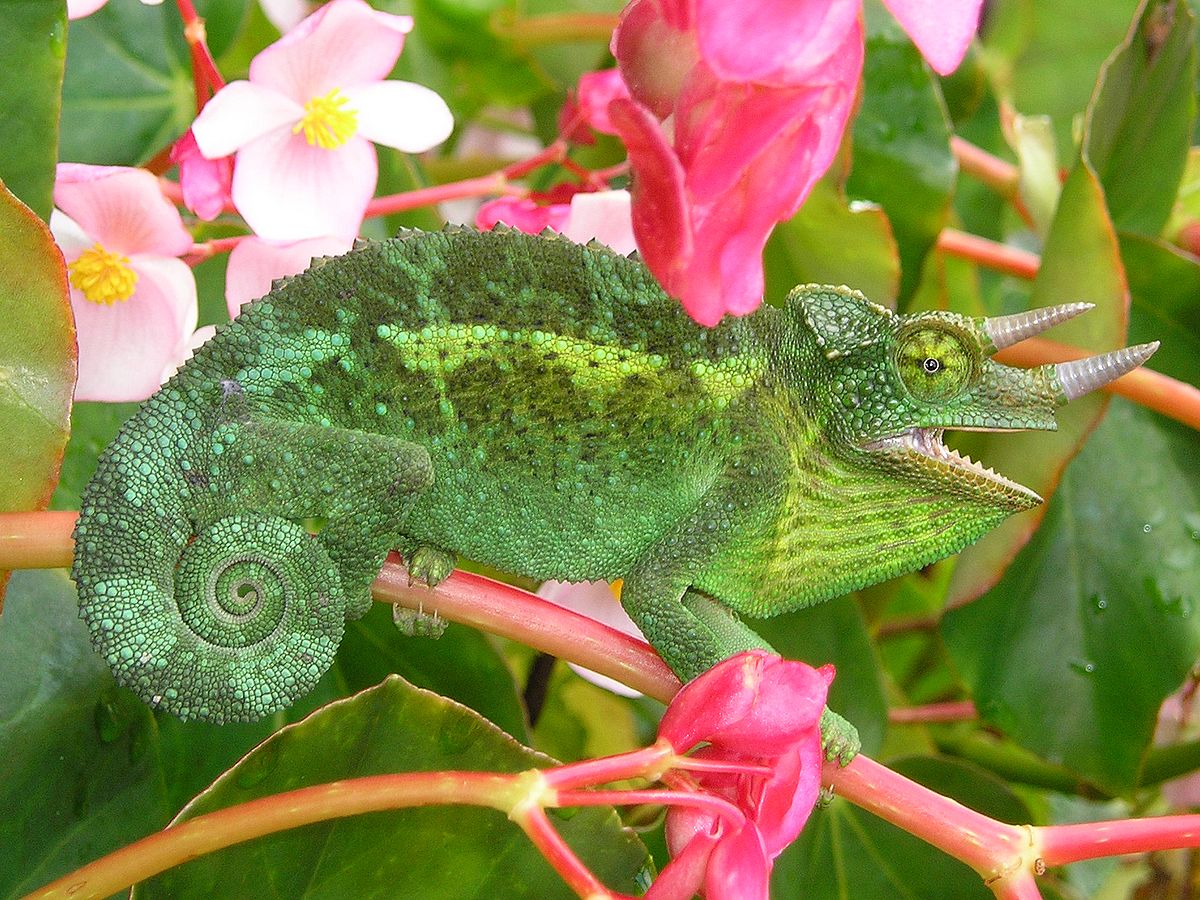Lizards are a fascinating group of reptiles that are found all over the world, with over 6,000 unique species. They are classified into various infraorders and families, such as Diploglossa, Gekkota, Iguania, Platynota, and Scincomorpha. From massive monitor lizards to tiny geckos, lizards are an incredibly diverse bunch of reptiles!
In this article, we will take a look at some of the most fascinating lizard species you definitely need to know about. We will also briefly touch on how lizards are taxonomically categorized and what lizard species are in each main group.
You are reading: The 15 Lizard Species You Should Know

The 15 Lizard Species You Should Know
Jeweled/Ocellated lizard (Timon lepidus)
The Ocellated lizard, also known as the Jeweled lizard or Eyed lizard, is a species of wall lizard that belongs to the family Lacertidae. It is endemic to southwestern Europe and is known for its striking appearance and robust build.
The male Ocellated lizard has a characteristic broad head and serrated collar, while the female is smaller and has a more slender build.
These lizards have thick, strong legs with long, curved claws, which make them excellent climbers. The Ocellated lizard is also known for its gastronomic value and was traditionally part of the cuisine in Extremadura, Spain.
However, the species is now protected in Spain, and capture and trade are forbidden. In recent years, the Ocellated lizard has become a popular pet lizard due to its striking appearance and relatively easy care.
Chameleon (Chamaeleonidae)
Chameleons are a distinctive and highly specialized clade of Old World lizards with over 160 species described as of June 2023. They belong to the family Chamaeleonidae, which is part of the order Squamata and the suborder Iguania.
Chameleons are known for their unique ability to change color and shift to different hues and degrees of brightness, which is used for communication, camouflage, and thermoregulation. They have independently moving eyes, paw-like hands and feet, and a long, sticky tongue that can extend almost the entire length of their body.
Chameleons are primarily insectivorous, although some larger species have been recorded eating birds. They are diurnal and exhibit a distinct locomotion in which they slowly rock back and forth between each step taken.
Chameleons are extremely popular in the pet trade due to their unique appearance and relatively easy care.
Gila monster (Heloderma suspectum)

The Gila monster (Heloderma suspectum) is a species of venomous lizard that is native to the Southwestern United States and the northwestern Mexican state of Sonora. It is the only venomous lizard native to the United States.
The Gila monster is a heavy, slow-moving reptile that can grow up to 56 centimeters long. It has a stout snout, massive head, and small, beady eyes that can be protected by a nictitating membrane.
The lizard is bright pink and black, usually in a reticulated pattern, but in a banded pattern in some populations. The Gila monster is most commonly found in mountain foothills dominated by saguaros and palo verde trees.
It is one of only a small number of venomous lizards, and its venom has been studied for its potential use in treating type 2 diabetes. The Gila monster is a protected species in the United States, and it is illegal to capture or kill them without a permit.
Green iguana (Iguana iguana)
The Green iguana (Iguana iguana) is a large, arboreal, mostly herbivorous species of lizard of the genus Iguana. It is also known as the American iguana or the common green iguana.
The Green iguana is native to Central and South America, from southern Brazil and Paraguay as far north as Mexico. Despite their name, Green iguanas occur in different colors and types.
In southern countries of their range, such as Peru, Green iguanas appear bluish in color, with bold blue markings. On islands such as Bonaire, Curaçao, Aruba, and Grenada, a Green iguana’s color may vary from green to lavender, black, and even reddish-brown.
Green iguanas from the western region of Costa Rica are red, and animals of the northern ranges, such as Mexico, are often brown.
Read more : The Top 10 Most Venomous Snakes In The World
Green iguanas are arboreal lizards that live high in the tree canopy. Juveniles establish areas lower in the canopies while older mature iguanas reside higher up. This tree-dwelling habit allows them to bask in the sun, rarely coming down except when females dig burrows to lay eggs.
Although preferring an arboreal (forested) environment, they can adjust well to a more open area. Green iguanas are primarily herbivores, feeding on leaves, flowers, and fruit. They are active during the day and can grow up to 6.5 feet long and weigh about 11 pounds.
Green iguanas are popular in the pet trade due to their unique appearance, but they can be difficult to care for properly.
Komodo dragon (Varanus komodoensis)

The Komodo dragon (Varanus komodoensis) is the largest extant species of lizard, growing up to 3 meters (9.8 feet) long and weighing up to 70 kg (150 lb). It is a member of the monitor lizard family Varanidae and is endemic to the Indonesian islands of Komodo, Rinca, Flores, and Gili Motang.
The Komodo dragon is a top predator in its habitat and one of the largest animals present in the area. It is also a scavenger that eats recently dead animals and removes them from the landscape.
The Komodo dragon is known for its venomous bite, which delivers toxins that inhibit blood clotting and cause rapid blood loss, leading to shock in its prey. Although they are not typically a threat to humans, they have been known to occasionally attack and kill people.
The Komodo dragon is a vulnerable species, with fewer than 1,400 adults in the wild. They are protected by Indonesian law, and a national park, Komodo National Park, was established to help protect them.
Leopard gecko (Eublepharis macularius)
The Leopard gecko (Eublepharis macularius) is a ground-dwelling lizard native to the rocky dry grassland and desert regions of Afghanistan, Iran, Pakistan, India, and Nepal. It is a member of the family Eublepharidae, which is part of the order Squamata.
The Leopard gecko is a popular pet lizard due to its docile nature, ease of care, and unique appearance. It is sometimes referred to as the first domesticated species of lizard due to extensive captive breeding.
Leopard geckos have movable eyelids, unlike many other geckos, and a segmented tail that can be autotomized. They are nocturnal and shelter under rocks or in burrows during the day.
Leopard geckos are medium-sized, terrestrial lizards that can grow up to 10 inches long. They are primarily insectivorous, feeding on a variety of insects. Leopard geckos are a great choice for beginner reptile keepers due to their easy care and docile nature.
Bearded dragon (Pogona vitticeps)

The Bearded dragon (Pogona vitticeps) is a species of lizard that is native to the arid to semiarid regions of eastern and central Australia. They are also known as the Inland Bearded Dragon or the Central Bearded Dragon.
Bearded dragons are medium-sized lizards that can grow up to 24 inches long, including the tail. They have a broad, triangular head, stout legs, and a robust tail.
Bearded dragons are named for the spiny projections under their chin, which they can puff out to appear larger and more intimidating. They are diurnal and primarily terrestrial, although they can climb trees and other objects.
Bearded dragons are opportunistic omnivores, feeding on a variety of insects, plants, and occasionally small rodents or lizards. They are popular in the pet trade due to their docile nature, ease of care, and unique appearance.
Crested gecko (Rhacodactylus ciliatus)
The Crested gecko (Rhacodactylus ciliatus) is a species of gecko native to southern New Caledonia. It was first described by French zoologist Alphonse Guichenot in 1866 and was thought to be extinct until it was rediscovered in 1994.
Crested geckos are typically solitary, nocturnal animals that hide in thick vegetation during the day and emerge into the lower canopy at night. They are arboreal and have specialized toe pads that allow them to climb smooth surfaces.
Crested geckos are known for their unique appearance, which includes a crest of skin that runs from their head to their tail and a prehensile tail that can be used to grasp objects. They are also popular in the pet trade due to their docile nature, ease of care, and unique appearance.
Crested geckos are primarily insectivorous, but they will also eat fruit and nectar in the wild. They have a lifespan of up to 20 years in captivity.
Blue-tongued skink (Tiliqua scincoides)
Read more : Discover 4 Types Of Rattlesnakes In Colorado
The Blue-tongued skink (Tiliqua scincoides) is a species of skink native to Australia and Tanimbar Island, Indonesia. It is a member of the family Scincidae, which is part of the order Squamata. There are three subspecies of Blue-tongued skinks: the eastern blue-tongued skink, the northern blue-tongued skink, and the Tanimbar blue-tongued skink. The eastern blue-tongued skink is the most common and widespread subspecies.
Blue-tongued skinks are medium to large-sized lizards, measuring upwards of 60 centimeters in length and over 1 kilogram in mass. They have a stout body, short legs, and a banded pattern on their skin. As their name suggests, Blue-tongued skinks have a blue tongue, which they use as a bluff-warning to potential predators.
Blue-tongued skinks are primarily herbivorous, feeding on a variety of plants, flowers, and fruits, but they will also eat insects and small animals. They are popular in the pet trade due to their docile nature, ease of care, and unique appearance.
Frilled lizard (Chlamydosaurus kingii)
The Frilled lizard (Chlamydosaurus kingii) is a species of lizard in the family Agamidae, native to northern Australia and southern New Guinea. It is also known as the frillneck lizard, frill-necked lizard, or frilled dragon.
The Frilled lizard is the only member of the genus Chlamydosaurus. Its common names come from the large frill around its neck, which usually stays folded against the lizard’s body.
The Frilled lizard is a diurnal lizard that spends most of its time resting on tree trunks and low branches. They are arboreal and have specialized toe pads that allow them to climb smooth surfaces.
Frilled lizards are primarily insectivorous, feeding on a variety of insects, but they will also eat small animals. They are popular in the pet trade due to their unique appearance, but they can be difficult to care for properly.
Jackson’s chameleon (Trioceros jacksonii)

Jackson’s chameleon (Trioceros jacksonii) is a species of chameleon native to East Africa and introduced to Hawaii, Florida, and California. Here are some key facts about Jackson’s chameleon:
– Taxonomy: Jackson’s chameleon was described by Belgian-British zoologist George Albert Boulenger in 1896. The English word chameleon (also chamaeleon) derives from Latin chamaeleō, a borrowing of the Ancient Greek χαμαιλέων (khamailéōn), a compound of χαμαί (khamaí) “on the ground” and λέων (léōn) “lion”.
– Appearance: Jackson’s chameleons are sometimes called three-horned chameleons due to the three horns on the males’ heads. They can grow up to 10-12 inches long and have a distinctive, triangular head and a prehensile tail.
– Subspecies: There are three subspecies of Jackson’s chameleon: T. j. jacksonii, T. j. merumontanus, and T. j. xantholophus. The Yellow-crested Jackson’s Chameleon is the largest of the three subspecies.
– Habitat: Jackson’s chameleons are arboreal and live in trees and bushes in forested areas.
– Diet: Jackson’s chameleons are omnivorous, feeding on a variety of insects, small animals, and vegetation.
– Pet trade: Jackson’s chameleons are popular in the pet trade due to their unique appearance, but they can be difficult to care for properly.
Veiled chameleon (Chamaeleo calyptratus)
The Veiled chameleon (Chamaeleo calyptratus) is a species of chameleon native to the Arabian Peninsula in Yemen and Saudi Arabia. Here are some key facts about Veiled chameleons:
– Appearance: Veiled chameleons have a distinctive casque, or helmet-like structure, on the top of their head, which is present in both males and females. They are banded in shades of green, yellow, and brown, which can adjust to varying shades.
– Habitat: Veiled chameleons are arboreal lizards, meaning they prefer to live high up in trees or lower near the ground in bushes and shrubs. They are found on plateaus of mountainous regions, forests, and valleys of southern Saudi Arabia and Yemen.
– Diet: Veiled chameleons are mostly insectivores, feeding on a variety of insects, but they will also eat vegetation.
– Behavior: Veiled chameleons are shy in nature and can be easily stressed, making them difficult to treat in captivity. They are solitary tree-dwellers and are mostly insectivores, ambushing prey with long, sticky tongues.
– Pet trade: Veiled chameleons are the most common chameleon species in the pet trade due to their unique appearance, but they can be difficult to care for properly. They have a lifespan of approximately 6 to 8 years in captivity.
Uromastyx (Uromastyx spp.)
Uromastyx is a genus of African and Asian agamid lizards, the member species of which are commonly called spiny-tailed lizards, uromastyces, mastigures, or dabb lizards. Here are some key facts about Uromastyx:
– Appearance: Uromastyx lizards have a distinctive, spiny tail and a flattened body. They come in a variety of colors, including shades of brown, yellow, and green.
– Habitat: Uromastyx lizards are primarily found in hilly, rocky areas with good shelter and accessible vegetation. They are native to North Africa, the Middle East, and Northern India.
– Diet: Uromastyx lizards are primarily herbivorous, feeding on a variety of plants, flowers, and fruits. They occasionally eat insects and other small animals, especially young lizards.
– Behavior: Uromastyx lizards are diurnal and spend most of their waking hours basking in the sun, hiding in underground chambers at daytime, or when danger appears. They are generally docile and make good pets, but they can be difficult to care for properly.
– Pet trade: Uromastyx lizards are popular in the pet trade due to their unique appearance and relative ease of care. They have a lifespan of approximately 15 to 20 years in captivity.
Anole (Anolis spp.)
Anoles are a genus of small to medium-sized tree-dwelling lizards that belong to the family Dactyloidae, native to the Americas. Here are some key facts about Anoles:
– Appearance: Anoles come in a variety of colors and patterns, including shades of green, brown, and gray. They have a slender body, long tail, and a triangular head.
– Habitat: Anoles are arboreal lizards, meaning they prefer to live high up in trees or lower near the ground in bushes and shrubs. They are found throughout the warmer regions of the Americas and are especially abundant in the West Indies.
– Diet: Anoles are primarily insectivorous, feeding on a variety of insects, but they will also eat small animals and vegetation.
– Behavior: Anoles are diurnal and spend most of their waking hours basking in the sun, hiding in underground chambers at daytime, or when danger appears. They are generally docile and make good pets, but they can be difficult to care for properly.
– Species: The green anole (Anolis carolinensis) is the most common species of Anoles, native to the southeastern United States and introduced to islands in the Pacific and Caribbean. There are over 425 species of Anoles, making it the world’s most species-rich amniote tetrapod genus.
Anoles are popular in the pet trade due to their unique appearance and relative ease of care.
Horned lizard (Phrynosoma spp.)
Horned lizards are a group of lizards that belong to the genus Phrynosoma, which is part of the family Phrynosomatidae. They are also known as horny toads or horntoads. Here are some key facts about horned lizards:
– Appearance: Horned lizards have a distinctive, flattened body and a spiny tail. They have a variety of horn-like projections on their head and body, which vary in size and arrangement from one species to another.
– Habitat: Horned lizards are found throughout the Americas, from Canada to northern Mexico. They are primarily found in arid and semiarid habitats in open areas with sparse plant cover.
– Diet: Horned lizards are primarily insectivorous, feeding on a variety of insects, but they will also eat small animals and vegetation.
– Behavior: Horned lizards are diurnal and spend most of their waking hours basking in the sun, hiding in underground chambers at daytime, or when danger appears. They are generally docile and make good pets, but they can be difficult to care for properly.
– Species: There are about 14 species of horned lizards, including the Texas horned lizard (Phrynosoma cornutum), which is the most well-known species.
Horned lizards are popular in the pet trade due to their unique appearance, but they can be difficult to care for properly.
FAQS
1. What are the 15 lizard species included in the article?
The article features 15 notable, unique, and interesting types of lizards, including the green iguana, chameleon, Gila monster, and more.
2. How are lizards classified?
Lizards are classified into five infraorders, which loosely categorize all types of lizards based on traits like their body plans, how they’ve evolved over time, and other physical characteristics they may share.
3. What is the most common species of anole?
The green anole (Anolis carolinensis) is the most common species of anole, native to the southeastern United States and introduced to islands in the Pacific and Caribbean.
4. What is the most well-known species of horned lizard?
The Texas horned lizard (Phrynosoma cornutum) is the most well-known species of horned lizard.
5. Are Uromastyx lizards herbivorous or carnivorous?
Uromastyx lizards are primarily herbivorous, feeding on a variety of plants, flowers, and fruits, but they will occasionally eat insects and other small animals.
6. Are horned lizards good pets?
Horned lizards can be difficult to care for properly, so they may not be the best choice for a pet. However, they are unique and fascinating animals to observe in the wild.
Source: https://petstutorial.com
Category: Animals










